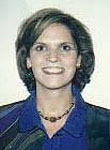A Different Formula for Successful Team-Building

With so many businesses "working leaner" today, it is more important than ever for employees to work collaboratively -- to share knowledge, learn from one another and, ultimately, serve their internal and external customers better.
But waves of downsizings and hiring freezes have meant that today's workers have more to do -- and less time to spend collaborating with one another. To foster greater cooperation, businesses have invested in one- or two-day "team building" workshops.
"Single efforts can have some impact, but they don't tend to have the lasting effect that we look for," says Marcia Meislin, a member of the WJM Associates coaching faculty. "Many times off-site meetings are dramatic enough to shake people up out of their complacency and they do make some behavior change. But the big issue is how do you sustain that over time?"
For some companies, the answer is to conduct a team-building process over a period of time, usually six months to a year, and to provide both the leader and the team with multiple opportunities to reinforce the desired behaviors.
A sample program to develop team effectiveness might look like this:
- Step 1: The consultant and team leader meet to identify objectives and create a customized "Team Scorecard" based on business objectives, company culture, and specific team issues. This tool is used before and after the team-building process to measure progress.
- Step 2: The consultant meets individually with all participants to gather data and have them complete their Team Scorecard.
- Step 3: The team meets off-site in a dynamic, interactive team-building event that directly addresses its specific needs. Each participant leaves with a commitment to do something differently.
- Step 4: The team leader meets with the consultant to review his or her own development as a leader and to review the group's commitments and progress.
- Step 5: Team members meet individually with the consultant to review what they have learned, assess progress, and receive additional coaching for making the change they committed to the group.
- Step 6: The team leader and members retake their Team Scorecards and send the results to the consultant for compiling. The team reconvenes for a second team-building initiative and to review results on the follow-up Team Scorecard.
- Step 7: The consultant facilitates a group lunch with the team members without the team leader present for an open and honest discussion of how things are going. After that, the team leader meets with the consultant to discuss feedback and finalize a Development Action Plan to enhance team and leader effectiveness.
By the end of the process, team members will have had at least six meetings with the consultant and the leader will have at least eight meetings -- providing many more opportunities to reinforce desired behaviors than a single off-site meeting could have yielded.
Join our newsletter
Stay up to date on all things happening at WJM Associates



